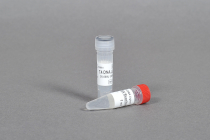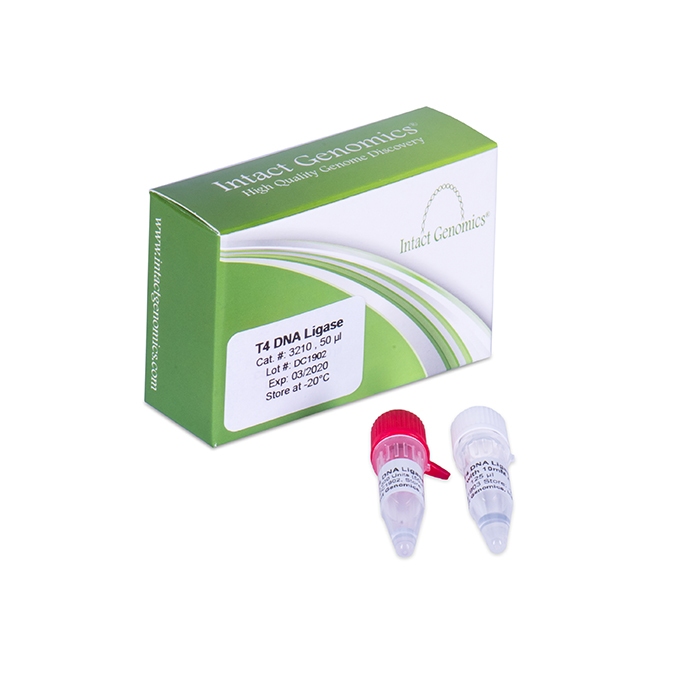T4 Dna Ligase Function | Dna ligase 4, ec 6.5.1.1, dna ligase iv, polydeoxyribonucleotide synthase atp 4. Amplified fragment length polymorphism (aflp). Of t4 dna ligase is ~62,000 da. Concentrations higher than 200 mm. T4 dna ligase is recombinantly produced in e.
The phosphodiester bonds are formed between the 3' hydroxyl end of the sugar moiety and the 5' end phosphate group. T4 dna ligase can ligate either. Two or more fragments of dna that have either blunt or compatible cohesive (sticky) ends. To perform ligation reaction using t4 dna ligase. Splint ligation of rna, whereby specific rna molecules are ligated together, can be carried out using t4 dna ligase and a bridging dna oligonucleotide complementary to the rnas.

Dna ligase is a special type of ligase that can link two dna strands that have a break in both complementary strands of dna together by creating phosphodiester bond. The addition of polyethylene glycol (peg) to ligation reactions can. Nick repair in duplex dna, rna or. 50% peg solution 50% (w/v) polyethylene glycol 4000. Splint ligation of rna, whereby specific rna molecules are ligated together, can be carried out using t4 dna ligase and a bridging dna oligonucleotide complementary to the rnas. It functions as a molecular glue to join nucleotides by forming phosphodiester bonds between nucleotides. T4 dna ligase (product no. T4 dna ligase catalyzes the formation of phosphodiester bonds between. Many dna ligases are identified from different sources, which have their own specific characters, molecular weights, requirements and mode of functions. Description dna ligase i is required for dna. Purified human dna ligase i. The phosphodiester bonds are formed between the 3' hydroxyl end of the sugar moiety and the 5' end phosphate group. The ligation efficiency of dsbs with t4 dna ligase is one order of magnitude higher than the nhej system from mycobacterium tuberculosis.
T4 dna ligase 100 u, 16°c, 10, 20, 30 and 60 minutes. T4 dna ligase catalyzes the formation of a phosphodiester bonds between 5' phosphate and 3' hydroxyl termini in duplex dna/rna. Dna ligase is a specific type of enzyme, a ligase, (ec 6.5.1.1) that facilitates the joining of dna strands together by catalyzing the formation of a phosphodiester bond. Of t4 dna ligase is ~62,000 da. Amplified fragment length polymorphism (aflp).

50% peg solution 50% (w/v) polyethylene glycol 4000. It functions as a molecular glue to join nucleotides by forming phosphodiester bonds between nucleotides. For blunt end ligation, these additional prerequisites have to be. For ligation, the optimal reaction ph is 7.6, and t4 dna ligase requires mg2 and atp as cofactors. The phosphodiester bonds are formed between the 3' hydroxyl end of the sugar moiety and the 5' end phosphate group. T4 dna ligase catalyzes the formation of phosphodiester bonds between. Dna ligase is an important enzyme used in molecular biology techniques. Inhibition and inactivation • t4 dna ligase is strongly inhibited by nacl or kcl at. The enzyme used to ligate dna fragments is t4 dna ligase, which originates from the t4 bacteriophage. Splint ligation of rna, whereby specific rna molecules are ligated together, can be carried out using t4 dna ligase and a bridging dna oligonucleotide complementary to the rnas. T4 dna ligase catalyzes the formation of a phosphodiester bonds between 5' phosphate and 3' hydroxyl termini in duplex dna/rna. T4 dna ligase can ligate either. Provides kits, reagents, instruments, and services that help researchers explore questions about gene discovery, regulation, and function.
The phosphodiester bonds are formed between the 3' hydroxyl end of the sugar moiety and the 5' end phosphate group. T4 dna ligase (product no. It joins dna molecules together by synthesising phosphodiester bonds between nucleotides at. T4 dna ligase 100 u, 16°c, 10, 20, 30 and 60 minutes. Dna ligase has applications in both dna repair and dna in addition.

For ligation, the optimal reaction ph is 7.6, and t4 dna ligase requires mg2 and atp as cofactors. T4 dna ligase is unstable on ice for long periods. Amplified fragment length polymorphism (aflp). Inhibition and inactivation • t4 dna ligase is strongly inhibited by nacl or kcl at. T4 dna ligase 100 u, 16°c, 10, 20, 30 and 60 minutes. Concentrations higher than 200 mm. Dna ligase has applications in both dna repair and dna in addition. Dna ligase is a specific type of enzyme, a ligase, (ec 6.5.1.1) that facilitates the joining of dna strands together by catalyzing the formation of a phosphodiester bond. T4 dna ligase can ligate either. Splint ligation of rna, whereby specific rna molecules are ligated together, can be carried out using t4 dna ligase and a bridging dna oligonucleotide complementary to the rnas. This enzyme will join blunt end and cohesive end termini. Dna ligase is a special type of ligase that can link two dna strands that have a break in both complementary strands of dna together by creating phosphodiester bond. A ligation reaction requires three ingredients in addition to water:
For blunt end ligation, these additional prerequisites have to be dna ligase function. T4 dna ligase (product no.
T4 Dna Ligase Function: Inhibition and inactivation • t4 dna ligase is strongly inhibited by nacl or kcl at.
0 komentar:
Posting Komentar